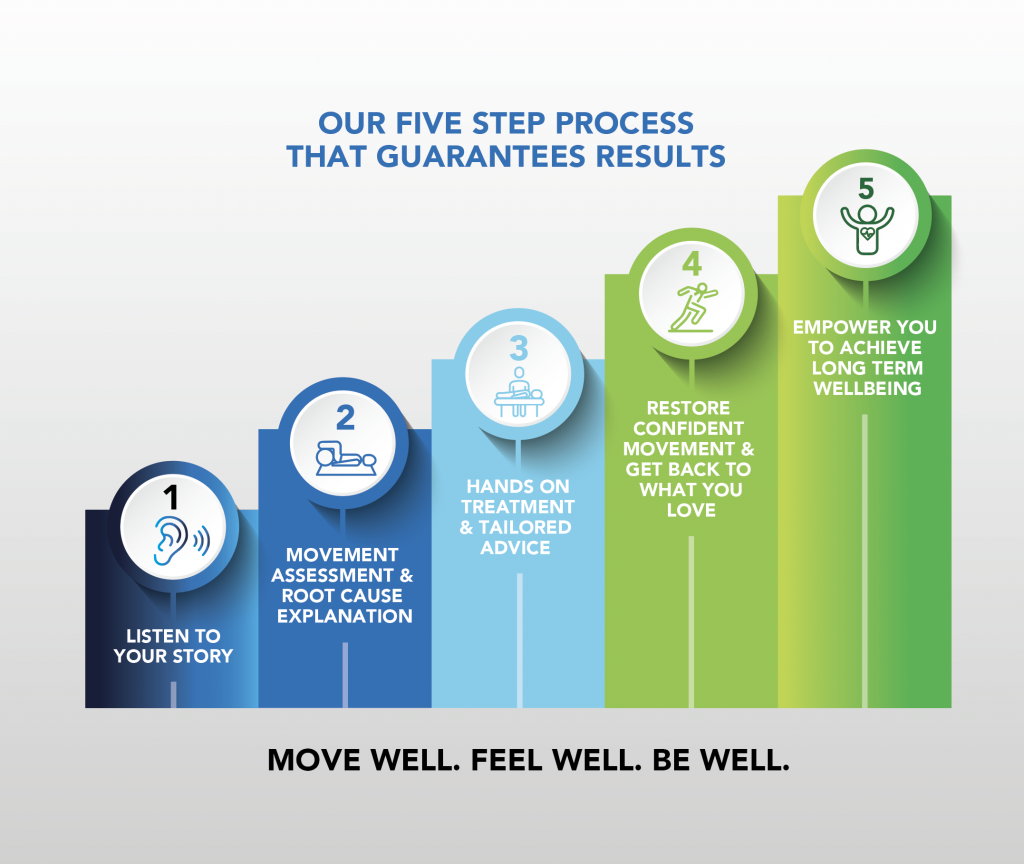The Root Cause is more important than the Pain/Injury
If your roof was leaking, would you spend all your time and money concentrating on the pool of water on your floor?
Or would you assess and address the cause of the pool of water which is not on your floor at all?!
The most common mistake when we see clients who have “tried everything” is concentrating on the site of pain; thinking that the wear & tear or damage is the main cause of their pain and they can’t have an effect on this.
Oftentimes, this structural damage or abnormality isn’t even the cause of the pain; or it may have been there for a long time but has now become irritated.
Irritation usually calms down. Unless it is continually being irritated for some reason.
Yes, hands-on and various manual treatments can help reduce your pain. But this will be temporary unless this root cause of the irritation is removed.
The most common root causes we see are:
- Previous Injuries
- Muscle weakness
- Reduced Mobility
- Too Much Too Soon Syndrome

Let’s talk through some root cause versus symptoms examples.
Back Pain:
You have ongoing back pain. This back pain is the left side of your back. Maybe there is even some wear & tear or a disc bulge present.
You’re unaware that you’re putting more weight on your left leg.
This extra weight on your left leg is causing more strain/load to be placed on the leg and into the left side of your lower back where it is now irritating muscles and even the disc bulge you have had for years which never got irritated.
Why isn’t your right leg doing its job?
Because you sprained it 5 years ago and never built the strength back up.
But your right ankle isn’t even sore?
Maybe it isn’t, but the lack of strength here can be subtle and your body starts to move differently to make up for this… at the expense of your lower back.
As you can see, this example includes both 1 & 2 from the above list.
This is just one simple example from many of how your lower back can get overloaded.
Shoulder pain:
You have recurring episodes of shoulder pain. It flares up a few times a year and can last for days to weeks.
It is often related to doing jobs around the house and garden.
You know your body has stiffened up in recent years but you feel this shouldn’t be happening.
You’ve been to the GP and got anti-inflammatories. They help settle the pain sometimes but it keeps recurring.
You’re now avoiding doing some jobs in the garden because you’re afraid you’ll do more damage.
You find it hard to raise your arm above your head when it’s flared up.
Maybe your upper back is extremely stiff although it doesn’t feel too stiff to you.
This is because you’re not really moving through your upper back at all and your shoulder is trying its best to get into that overhead position.
’s trying to make up for the lack of movement in your upper back.
This upper back stiffness, combined with the fact that you are doing way too many overhead tasks at once cause your shoulder to become irritated.
This will keep becoming irritated unless you loosen out your lower back and allow your shoulder to move more freely.
As you can see, these two reasons are number 3 & 4 from the list above.
Neck Pain:
Here is a video explainer on nack pain:
The whole body is connected. It is a complex being. Without a comprehensive assessment focussed on the root cause of your problem. It will likely never fully go away or recur often.
If you have any questions with your own complaint and you wish to speak to one of our team. Click the button below.